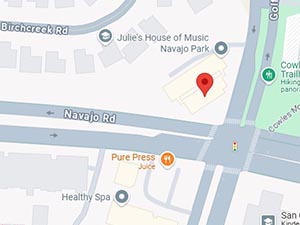
Over the past 30 years, the National Highway Traffic Safety Administration (NHTSA) estimates that airbags have saved over 50,000 lives. In a car accident, airbags work to prevent serious or even fatal injuries by catching you before your body slams into the steering wheel or dashboard.
In some cases, however, the force of an inflating airbag can injure or even kill. Airbags can also malfunction, leading to random and explosive deployment.
Should you suffer from airbag injuries in Vista, CA, a lawyer from Petrov Personal Injury Lawyers can help you identify possible sources of compensation. Contact our personal injury law firm at (619) 344-0360 to learn more about how we can help. Our Vista car accident attorneys for a free initial consultation to learn more.
How Our Vista Car Accident Lawyers Can Help You Recover Compensation for Your Airbag Injuries

Petrov Personal Injury Lawyers has been serving injured clients throughout North County — including Vista, California — since 2012. Our personal injury attorneys have recovered over $40 million for victims of traumatic injuries in that time.
If you get injured in an auto accident, our firm will provide you with the following:
- A free consultation to evaluate your case and explain your rights under California law
- Aggressive negotiators who will fight insurers for a fair settlement
- A legal team with over 20 years of legal experience to litigate your case
Airbag injuries can cover a range of outcomes, from minor pain to fatal head and neck trauma. Contact Petrov Personal Injury Lawyers to discuss your or your loved one’s airbag injuries and the compensation you can seek for them.
How Many Airbag Injuries Happen?
The U.S. government has required airbags in new vehicles since the 1999 model year. Over the past 24 years, all new cars, pickup trucks, and SUVs sold in the U.S. have had frontal airbags.
These airbags work when a sensor at the front of the vehicle detects an impact, such as when the front of your vehicle hits an object like a lamp post, bridge support, or another vehicle.
Airbags might deploy in both vehicles in that last case, typically when the two collide in a head-on crash, but in most cases, the airbags only deploy in one vehicle. For example, in a rear-end crash, the airbags typically do not deploy in the leading vehicle since it gets hit from the rear. Instead, they will deploy in the trailing vehicle that suffers the frontal collision.
The NHTSA tracks airbag fatalities. In its most recent report, airbags caused 290 fatal injuries between 1990 and 2008, alongside thousands of minor injuries over the same period.
However, those numbers are slightly misleading, as over 90% of the fatalities reported happened before 1998, primarily because airbags were not required in vehicles from 1990 until then.
Thus, manufacturers lacked a uniform set of regulations. Only beginning in 1998 did the NHTSA implement rules that required most manufacturers to reduce the power of their inflators, making airbags significantly safer.
Causes of Airbag Injuries
Airbags have three main parts: A sensor, which sits at the front of the vehicle to detect frontal impacts; an inflator, which is triggered by the sensor upon impact and uses a chemical reaction to rapidly produce a large volume of gas. That gas then flows into the airbag, fully inflating it in less than one-twentieth of a second.
The airbag is not sealed. If it were, it could burst when you hit it. Instead, it has vents, which serve two purposes. First, they ensure that the airbag cannot overinflate, and secondly, when you strike the airbag, your head and chest push the air out of the bag. That deflation absorbs your forward momentum and cushions your head instead of bouncing it away.
Minor airbag injuries result from the impact of your face and chest on the airbag, such as:
- Face and chest bruises
- Neck strain
- Facial fractures
More severe airbag injuries involve one of the following three factors:
Children and Small Adults
People of short stature typically sit closer to the dashboard or steering wheel, meaning they are more likely to be hit by an airbag as it inflates. Instead of cushioning their head and chest, the inflating airbag smashes their faces and snaps their heads back, resulting in serious or even fatal head and neck trauma.
Fortunately, though, most vehicles have sensors and switches to deactivate airbags for shorter riders.
Rear-Facing Car Seats
When an airbag inflates, it can strike a child’s rear-facing car seat with such force that it flips over, ejecting your child. Many states prohibit drivers from using rear-facing car seats in the front seat to avoid these sorts of injuries.
Defective Inflators
Takata was a company that supplied airbag inflators to most of the major car manufacturers between 2002 and 2015. However, the company used a combination of chemicals in its inflators that were subject to degradation in hot and humid weather.
As a result, the defective inflators were always at risk of deploying their airbags without getting triggered by a collision. Worse yet, the chemicals could cause the inflator to explode. These defective airbags caused 26 deaths and over 400 injuries in the U.S.
Schedule a Free Consultation With Our Vista Airbag Injury Lawyers
The liability for an airbag injury during a collision falls on the at-fault driver. Contact Petrov Personal Injury Lawyers at (619) 344-0360. for a free consultation to discuss the airbag injuries you have sustained and the compensation you can seek for them.


